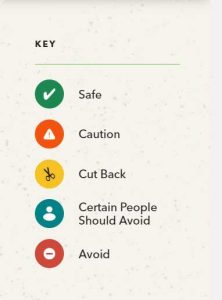Coastline Registered Dietitian Stephanie Boulay dished out important data recently around which food additives are considered harmful, which benign, and which should be used with caution.

Wine too has been used to keep food safe longer while xanthan gum, another additive, is often used as a thickener or stabilizer ingredient. Some additives, like vitamins, can increase the health benefits of food products. Others, like eggs, serve as an emulsifier, helping bind ingredients together.
Additives, therefore, are not necessarily bad. The problem comes when they fill a function but aren’t fully safe to eat or to eat frequently. That’s when it becomes important to know which ones are in the food you like and how much is safe to eat.
Here are seven tips from Boulay to help keep your additive intake safe.
- Read food labels: Boulay is a firm believer in checking food labels whenever you shop in order to understand how much of certain substances, like salt, you’re consuming and to determine if the product contains food additives that should be avoided.
- Know which additives are safe: Boulay recommends a list that puts food additives into five safety categories that range from “Safe” to “Avoid.” The list comes from the Center for Science in the Public Interest and can be found at www.chemicalcuisine.org. The website list also indicates what the health concern is for those additives it suggests avoiding.
- Check ingredient lists regularly: Additives that a food contains will be found in the list of ingredients on any food product label. Some may be familiar to you, while others have less familiar names like diacylglycerol, which is considered safe, or acesulfame potassium which is listed as an additive to avoid.
- Don’t make assumptions based on the additive’s name: Like the example above shows, the safety of a specific additive cannot be determined by name alone. Chemical names do not always mean they are bad for you and, vice versa, natural substances are not always safe. Alpha tocopherol, for example, is another name for Vitamin E a safe substance, while carrageenan, a type of seaweed, is listed under the Caution heading.
- Focus on the additives to avoid: So many additives exist that it can be overwhelming to track them all. To simplify the process, Boulay suggests focusing on the additives that are on the list to avoid and choosing alternatives when you encounter them.
- Eat foods without labels: The best way to avoid additives is to eat food that doesn’t need labeling, according to Boulay. Fresh fruits and vegetables are some of the healthiest food choices you can make when eating. Start there, she says.
- Try not to overthink it: 80 percent of the time you should eat well, Boulay advises. The other 20 percent, you can eat what you want.

Recent Comments